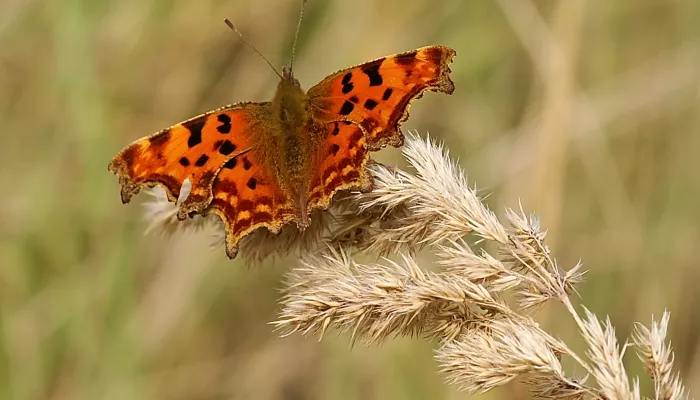About
The comma is a medium-sized orange-and-brown butterfly. It gets its name from the comma-shaped white spots on the underneath of its wings. It is on the wing throughout the year, having several broods and overwintering as an adult. It is a common and widespread butterfly of woodland edges, particularly during the spring and autumn. The caterpillars feed on common nettles, elms and willows.They have brown and white flecks that make them look like bird-droppings and help to camouflage them.

